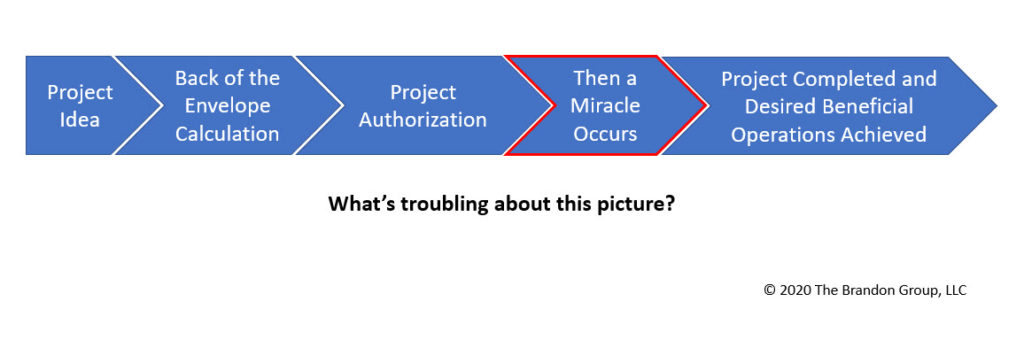In a recent conversation with my wife, she mentioned someone who said he did a quick “back of the envelope calculation.” When she heard him say this, she immediately thought about my distaste of the term.
The term, itself, doesn’t irk me. What irks me is when the term is associated with a person who does the calculation without having the appropriate experience to do it. Even if the calculation was literally done on the back of an envelope, I’d like to know the person doing it had intimate knowledge and understanding of all the intricacies associated with the calculation process. They need this ability to determine if the result makes sense.
Here’s why I feel this way. In one of my career experiences, a senior leader did a “back of the envelope calculation” for a facility to be built at an existing industrial site belonging to a third party. He did the calculation with the aid of one of the third-party site’s representatives. I liked the fact they at least did a calculation. What I didn’t like is they eventually supported a major business decision to move forward based solely on this “quick and dirty” calculation.
Why didn’t I like it ….? I didn’t like it because these senior leaders were not trained capital project estimators. They didn’t know the relationship between the quality of the inputs and how it relates to the quality of the estimate output. In fact, they didn’t have any direct capital project experience at all, nor did they do any check or comparative estimates whatsoever.
As it turned out, there were much better options for siting the facility. The actual cost of the facility ended up being 5x what they had calculated and took 6x as long to complete. Most of the additional time to complete was the result of having to develop the technology. Because there was little useable technology developed at the time the calculation was made, the design process was based on guesses as to what the technology would be. This resulted in a tremendous amount of design rework. I can say more about not having technology ready when a project is sanctioned or authorized but I’ll save that topic for another time.
I also recall a professor in college telling the class that a student came to him to request partial credit for a question he answered on a test. The student used the correct set of equations to arrive at the answer, but his answer was incorrect. The question required students to calculate the height or altitude of a satellite’s orbit. The student’s answer was 3 feet. The professor told the student he wouldn’t get partial credit because when you arrive at an answer, the answer needs to make a little bit of sense. A satellite orbiting the earth at a height of 3 feet made absolutely no sense.
When a decision is made to move forward based on a calculation whose result has not been properly vetted or does not seem to make sense, the result is often disastrous. In fact, some who have cut their professional teeth in the engineering and operations fields called this magical thinking where a miracle is required to achieve success – see the flow chart I’ve illustrated below.





